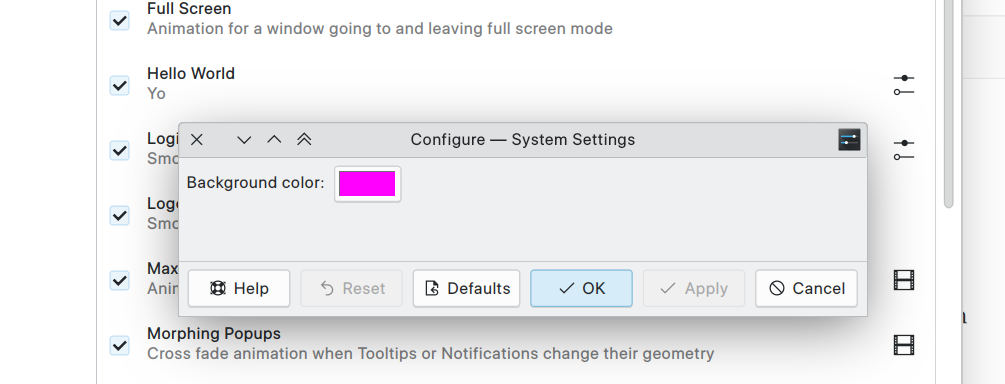Since the dawn of the times, the only way to implement any effect that has fancy user interface used to be in C++. It would be rather an understatement to say that the C++ API is difficult to use or get it right so there are no glitches. On the other hand, it would be really nice to be able to implement dashboard-like effects while not compromise on code simplicity and maintainability, especially given the rise of popularity of overview effects a few years ago, which indicated that there is demand for such effects.
In order solve that problem, we started looking for some options and the most obvious one was QtQuick. It’s a quite powerful framework and it’s already used extensively in Plasma. So, in Plasma 5.24, we introduced basic support for implementing kwin effects written in QML and even added a new overview effect. Unfortunately, if you wanted to implement a QtQuick-based effect yourself, you would still have to write a bit of C++ glue yourself. This is not great because effects that use C++ are a distribution nightmare. They can’t be just uploaded to the KDE Store and then installed by clicking “Get New Effects…”. Furthermore, libkwin is a fast moving target with lots of ABI and API incompatible changes in every release. That’s not good if you’re an effect developer because it means you will need to invest a bit of time after every plasma release to port the effects to the new APIs or at least rebuild the effects to resolve ABI incompatibilities.
This has been changed in Plasma 6.0.
In Plasma 6, we’ve had the opportunity to address that pesky problem of requiring some C++ code and also improve the declarative effect API after learning some lessons while working on the overview and other effects. So, enough of history and let’s jump to the good stuff, shall we? 🙂
This… This is amazing! I can finally write an application switcher optimized for my touchscreen device! Thanks KDE devs!



